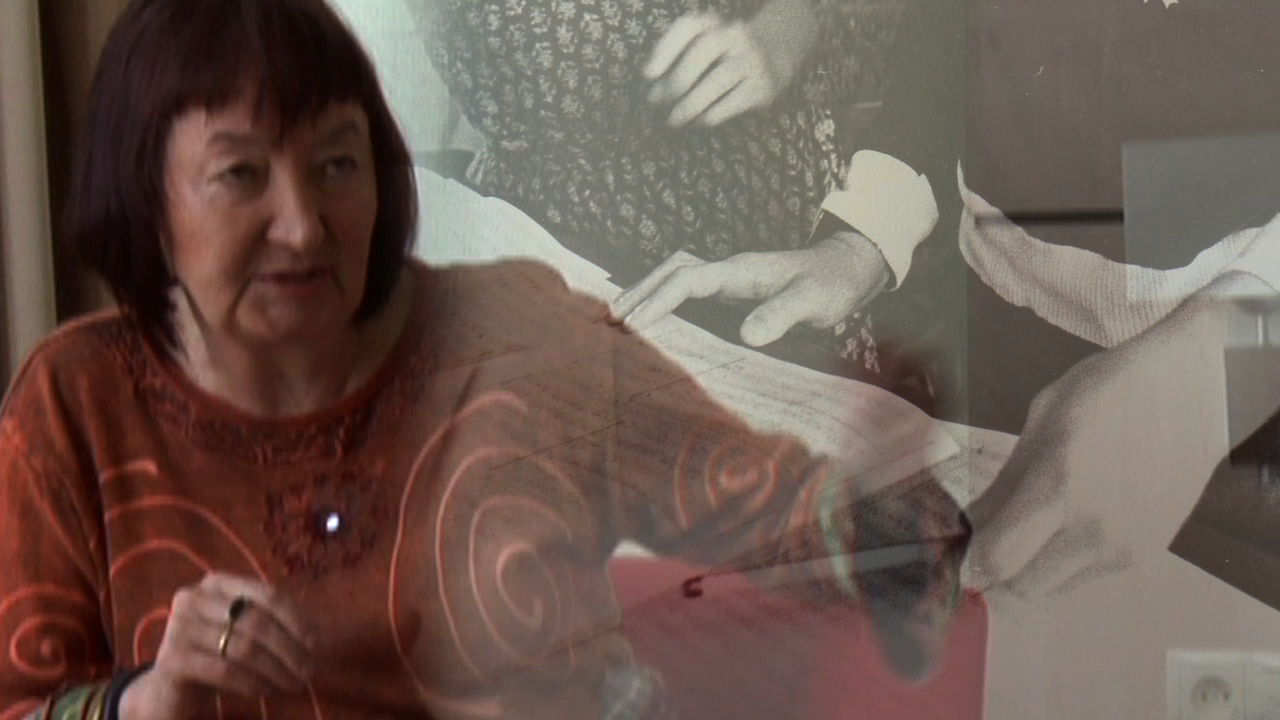 |
||||
Still from Passion. (dir. Erin Harper, 2009). Used with permission from Erin Harper. |
||||
Journal Issue 2.supplement
Summer 2010
Edited by Deanna Utroske, Agatha Beins, Karen Alexander, Julie Ann Salthouse, and Jillian Hernandez
Managing Editor: Katherine O’Connor
One Filmmaker’s Passion: A Retrospective Search for Inspiration
Essay by Erin Harper
How honest is the filmmaker with herself as she shoots and edits her film? Does she understand her motives, her compulsions, her anxieties?
Barbara Hammer has been a mentor to me as I move into postproduction for my first feature-length documentary, Passion (forthcoming). When she recommended that I write for Films for the Feminist Classroom, I thought I might explore something she said almost as an afterthought at a lecture: “That internal conflict in me, that’s why [I] film.”1 Confronting this idea as a first-time filmmaker, introduced me to a process of self-analysis, combining personal and artistic introspection. I found that my conclusions are as much in flux as is the form of the questions. I begin this self-analysis process by looking back at my points of entry into Passion, from its conception forward.
The first point of entry into the film was my love of the subject matter, Zbigniew Seifert (1946–1979), whose music affected me deeply and whose legacy was curiously left unacknowledged after his death. Seifert was a jazz violinist and composer, and I was drawn to his music by its haunting quality, dark tone, and virtuosic complexity. Above all, the sound in Seifert’s work, which many characters in the film described as a “cry,” provoked and inspired me.
The second point of entry was my connection to the film’s protagonist, my partner, jazz violinist Zach Brock. Brock, age thirty-two, discovered Seifert’s last recording in the bins of a used record store. It was a 1970s LP entitled Passion (1979), released after Seifert’s death at the age of thirty-two. Listening to this record was a watershed moment for Brock and sparked his obsession with the sound and playing of Seifert. The music affected Brock’s technique and tone, and he even traded his violin in for one with a darker sound.
As I recall, the temporal sequence of events listed above does not align with the artistic, inspirational hierarchy I construct now, looking back two years after the principal shooting.
Following Brock across the Atlantic with a camera, I was moved by his connection to Seifert at a time when he—Brock—was refashioning his own voice. Focused exclusively on Brock’s personal journey, I failed to recognize how strongly his artistic odyssey reflected my own artistic quest, the all-consuming, monumental one of making my first feature-length film.
Many people cautioned me not to reveal my relationship with Zach for the duration of the production process. In the editing room I nonetheless saw the relationship revealed. The connection between filmmaker and subject is a strange dance existing in a private, often unacknowledged space. Unconsciously, I wielded the camera from a place of intimate observation and familiarity, a place of admiration, love, and frustration. The camera played closely behind Brock, sharing his point of view as he conducted interviews about Seifert. But soon, I wanted to turn the camera on Brock himself and became much more interested in his questions than in the interviewees’ answers. Because I couldn’t articulate this, I met resistance when I asked Brock questions that strayed from Seifert’s story. I see now that my questions—a third remove from Seifert—were an attempt to address my own personal and artistic preoccupations.
There is one scene that departs from the overall format of the film’s interviews. I put down the camera and stepped into the frame to meet Agnieszka, Seifert’s widow. Our rapport was instant and effortless. We compared our lives of delicate balance: the exhilaration of being close to and supportive of our artistic partners, all the while pursuing our own lives. Perhaps this is the heart of the film.
Returning to my opening questions: How honest is the filmmaker with herself as she shoots and edits her film? Does she understand her motives? Or, as Hammer asked much more simply when we sat down together to discuss my project, “Where are you in the film?”
Perhaps I am searching vicariously, through my film’s protagonist, to construct an individual, resonant artistic voice. It could be said that in Passion both Brock and I are searching for our heroes and in the process searching for ourselves. At what point does the artist relinquish the hold of influence and find her own way?
That internal conflict in me, that’s why I film.
Besides shooting with Barbara Hammer on a recent project, Erin Harper is directing a feature-length documentary, Devil May Care (forthcoming), about Bob Dorough, the octogenarian jazz man behind SCHOOLHOUSE ROCK! She has directed and produced short films, which have been selected for IFP’s NextGen series and film festivals from New York to Poland. Harper was recently awarded a New York State Council on the Arts grant, which should allow her to finish editing the feature-length version of Passion (forthcoming).
Copyright © 2014. All rights reserved.